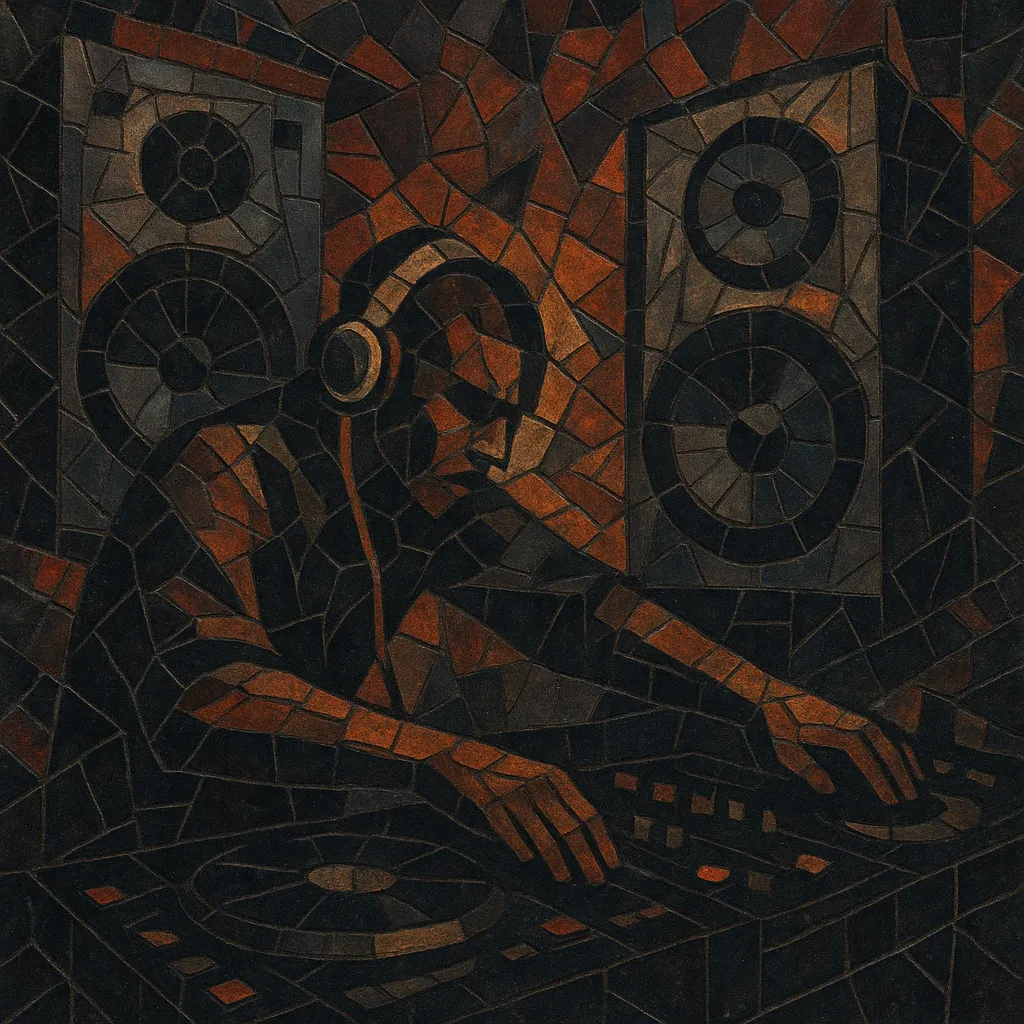Hardstep is a mid-1990s strain of drum and bass that tightened jungle’s frenetic breakbeats into tougher, more rigid, "stepping" drum patterns. Where early jungle leaned on chopped Amen edits and reggae signifiers, hardstep foregrounds punchy two‑step rhythms, heavyweight sub‑bass, and gritty midrange tones.
The style is club-focused and percussive, emphasizing forward drive and impact over lush atmospheres. Hip‑hop’s influence is felt in the head‑nod swing of the drums and occasional MCing, but the overall aesthetic is darker and more industrial than classic ragga‑jungle. Hardstep helped bridge the gap from jungle to the colder, techier forms of late‑’90s drum and bass.
Hardstep emerged in the United Kingdom as jungle morphed into drum and bass. Producers streamlined the hyper‑chopped breakbeat science of early jungle into more rigid, stepping drum patterns with hard‑hitting snares and fat sub‑bass. Influences included breakbeat hardcore, darkcore’s moodiness, and hip‑hop’s drum sensibility.
Labels and crews around London—especially those linked to DJ Hype, DJ Zinc, Pascal (True Playaz/The Ganja Kru), and Metalheadz affiliates—pushed the sound on dancefloors. The emphasis moved from ragga signifiers and heavily edited breaks toward tighter two‑step frameworks, Reese‑style basses, and stark, club‑ready arrangements. Artists like Dillinja, Lemon D, Ray Keith, Ed Rush, and Dom & Roland delivered influential 12"s that defined the palette: seismic subs, militant snares, and stripped, driving grooves.
Hardstep’s rhythmic economy and darker tonal direction laid the groundwork for techstep’s colder, industrial edge, which in turn paved the way for neurofunk. Even as drum and bass diversified, the hardstep blueprint—step‑led drums, dominant subs, and no‑nonsense arrangements—remained a core template for heavy dancefloor tracks.


